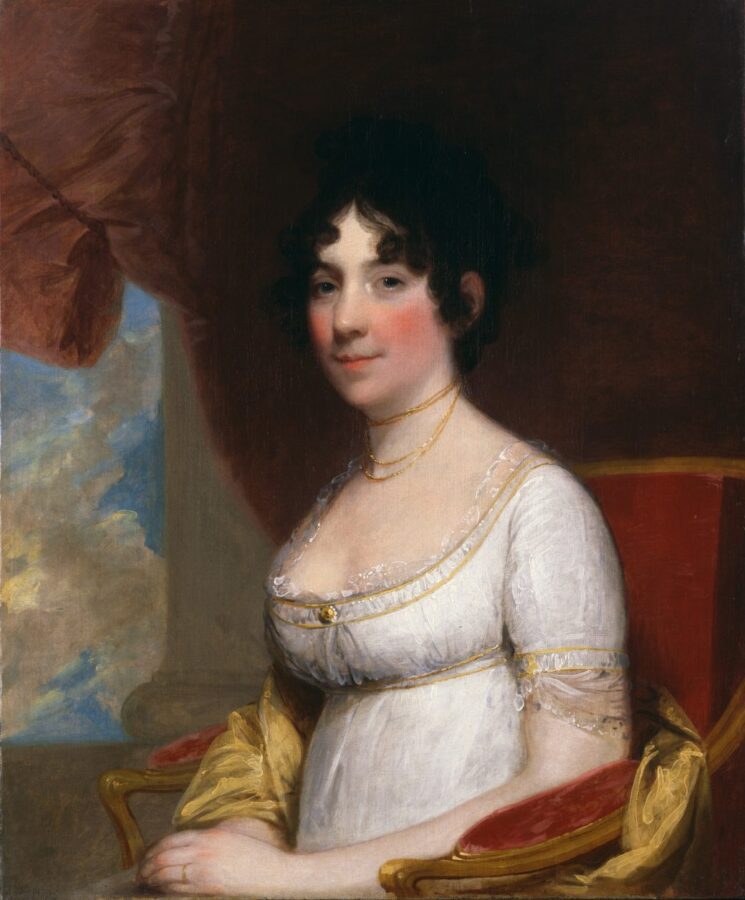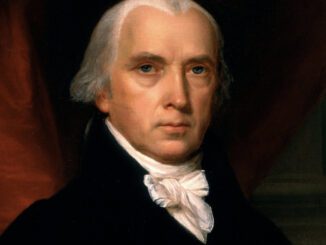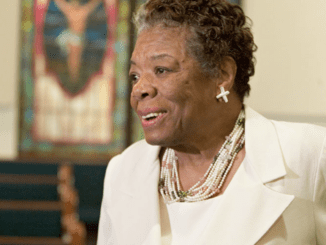
Throughout the month of March the NSJ will be celebrating the remarkable contributions of North Carolina women for Women’s History Month.
It is with great pride that North Carolina boasts the birthright of America’s original First Lady, Dolley Madison, and for good reason. History predominantly celebrates Dolley for her courage and patriotism in safeguarding our national treasures when the British marched on our nation’s capital and burned the White House in 1814. However, since March is Women’s History Month, it is important that we consider the character and legacy of the woman whom we revere as our original “First Lady.” Spanning nearly half a century in the political circles of our nation’s capital (1801-1849) as Mrs. Madison, Dolley wielded her femininity and position in public life setting a precedent for our young republic to be renowned for its civil discourse and bipartisan cooperation.
Born on May 20, 1768 in the Quaker community of what is now the Guilford College area of Greensboro, North Carolina, Dolley Payne was the oldest of John and Mary Payne’s nine children. While her days living on North Carolina soil were brief, many historians would argue her humble roots were not far from her thoughts as she ascended influential political spheres. U.S. Senator Elijah Mills, who served during Madison’s second term, remarked “She welcomed all classes of people, greasy boots and silk stockings alike.”
While her formative years were shaped outside of Richmond, VA and later in Philadelphia, PA, Dolley had an innate and profound sense of confidence and authenticity which made her relatable to many. By the time her second husband, James Madison, was appointed as the Secretary of State by President Thomas Jefferson, she was already considered a social tour de force.
Undeniably, Dolley was a public woman because of her husband’s prominent position in government, but what was truly remarkable about Dolley is that she proved to be a formidable political player in a day and age when women were completely excluded from politics. She never voted, never held public office, refused to take credit for any political policy, but instead insisted that government first and foremost should be “politics by people.”
Dolley was no doubt aware she possessed a considerable amount of political capital. While men wore their power in their position, public debates and monetary possessions, Dolley clothed her political capital with the most modern styles veiled in the culturally approved roles of wife and hostess. While she still existed in a world where she had no legal rights to own property or to vote and instead was at the mercy of her husband’s character, Dolley was savvy and smart and used her position to further both her own and her family’s political goals.
Serving as hostess to both the widowed Jefferson and her husband, she quickly garnered the title of First Lady. This title originated from her role as primary hostess for the executive branch during both presidents’ administrations. She was known for her perfectly orchestrated and curated gatherings of Washington’s powerful political leaders, a bipartisan mindset that neither the Washington or Adams administration had encouraged between opposing parties. She successfully aided in the granting of political favors, encouraged a new way of ruling that supported cooperation over coercion, all the while supporting the political landmarks of the administration of both presidents. Her goal undoubtedly was to build solid bridges between opposing ideologies rather than building walls of opposing discontent. Dolley learned above all else that using conversation to find congruence between ideas rather than fighting with physical altercations and worse case duels, which had previously been the solution, was a more productive and certainly respectable way to govern.
Dolley wielded her femininity as well by the way she presented herself to Washington society. Her avant garde stylistic choices from her French turbans to European dress set the bar high for future first ladies and made her a cultural icon during her 50-year political life. However, even more significantly she laid a foundation for the stature of the Office of President with her carefully curated decor and beautifully orchestrated social events for our nation’s newly established home in the city of Washington.
Dolley was 40 years old when her husband became the fourth U.S. president in 1809. She utilized her drawing room in the newly designed and decorated White House and later the temporary Octagon House following the aftermath of the war of 1812, for her famous gatherings. It was here where she would often be found dipping snuff with her invited guests all the while encouraging common ground and critical conversations between unlikely political members. While President Madison was very much an introvert, Dolley thrived in the role as her husband’s First Lady and was lauded for her friendliness, warm hospitality and skillful entertaining. Her popularity had a profound effect in the lasting rapport of her husband’s administration. Despite war and political unrest, former President John Adams described Madison‘s presidential legacy in 1817 as “notwithstanding a thousand faults and blunders….has acquired more glory, and established more Union, than all three Predecessors put together.”
Having spent the president’s final years at their home of Montpelier in Virginia, the widowed Dolley returned to the nation’s capital soon after his death in 1836. Her arrival was heralded with much celebration. Washingtonians official and unofficial lined up to pay homage. The House of Representatives granted her free lifetime postal franking, a privilege of congressmen during their terms and granted only to former presidents. They also presented her with her own seat on the floor of the House, an honor unprecedented for a man, let alone a woman.
And when she died in 1849, at age eighty-one, Congress celebrated her with a state funeral, the largest one our nation’s capital had yet seen even those of former presidents. Along with President Zachary Taylor and his cabinet, both houses of Congress adjourned to march in the procession, escorting, one last time, the woman who had come to be known as “America’s First Lady.”



